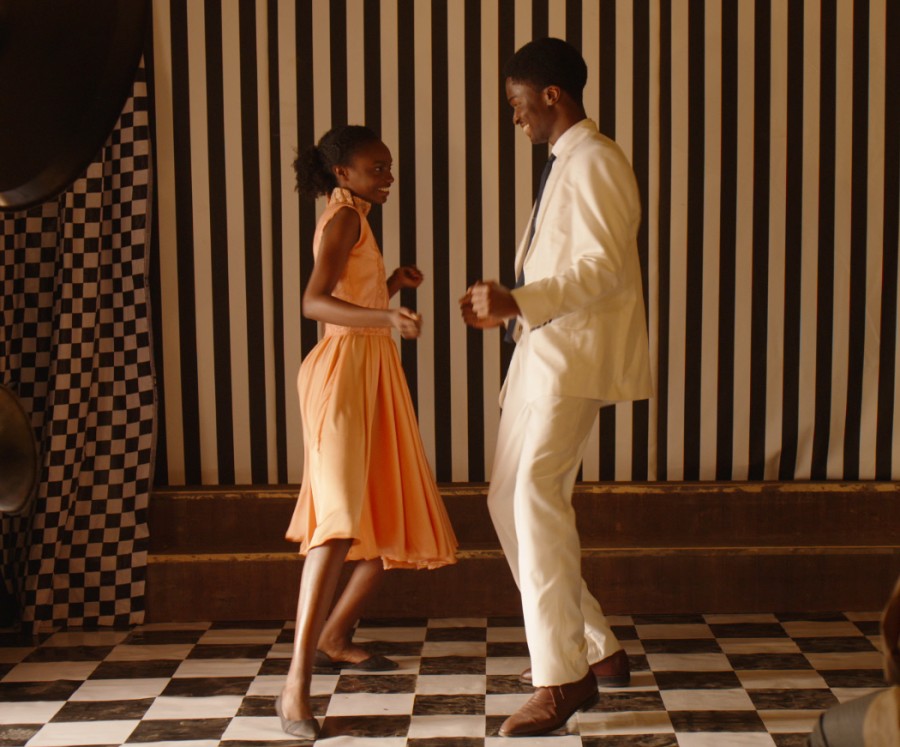Review: ‘Dancing the Twist in Bamako’ is a tale of star-crossed lovers in a postcolonial world
Set in a nation freshly liberated from French colonial rule, director Robert Guédiguian tells the story of two lovers fighting to be together against all odds. The film opened on Feb. 24 at the Film Forum.
“Dancing the Twist in Bamako” has been screening at the Film Forum since Feb. 24. (Courtesy of ArtMattan Films)
March 6, 2023
“Dancing the Twist in Bamako” by French director Robert Guédiguian is set in 1962 Bamako, Mali, and features the country’s history just after gaining independence from French colonial rule. With its post-colonial backdrop, the film’s main focus is depicting a beautiful story of two star-crossed lovers.
The cinematography in the film is remarkable, capturing Bamako in a captivating light. Director of cinematography Pierre Milon’s city vistas make it seem as though a sunlit ocean is reflected overhead. The shadows bouncing off Bamako’s buildings and the characters’ dynamic attire reflect the lively nature of the city’s residents. It is within these elements that audiences meet the film’s lead, Samba (Stéphane Bak), a bold young man who seeks to spread President Modibo Keïta’s socialist agenda in the 1960s.
Referenced in the title, the twist is a dance inspired by rock and roll music, and it brings levity to the film’s heavier themes — namely sexual violence and coerced marriage. Lara (Alice Da Luz), a charming and intelligent young woman, runs away from her home to escape an arranged marriage with an abusive man. Seeking refuge, she hides in the back of Samba’s truck to ride with his comrades to Bamako. When Samba discovers and properly meets Lara, he agrees to help her start a new life, away from her abusive husband.
Samba and Lara’s bond strengthens when they dance the twist at a disco, named the Happy Boys’ Club. Era-defining songs by The Beach Boys, The Supremes and Otis Redding play during these sequences. Each joyful moment that Samba and Lara share is captured in frames inspired by the work of photographer Malick Sidibé, who was known for documenting lively moments of Malian people and their culture, including their dancing in the ’60s. The stark black-and-white dancing snapshots convey the characters’ movements and evoke blissful feelings for the viewer.
On top of these moments of youthful exuberance, the film does not hesitate to explore the political tensions of the time. Samba, a staunch socialist, views dancing as a way to celebrate and revel in post-colonial optimism. However, the conservative governing body decrees that dancing the twist, ’60s music and the disco — all of which are distinctly associated with Western culture — are harming young people. In a government meeting full of officials, Samba declares, “The twist is the revolution!” The whole room laughs at his perceived naivety, but it is this idealism that reveals Samba’s romanticism and love for his homeland.
The post-colonial state of Mali is delicate, affecting how Samba and Lara’s relationship develops amid the country’s changing politics. They dream of a future together, but Lara’s husband and brother are after her to bring her back to the village. Samba, deeply in love with Lara, does everything he can to protect her from this fate.
As much as Guédiguian succeeds in portraying a sincere romance, it’s difficult to ignore the questionable decision to allow a French director to depict a story about Mali, a country recently independent from French colonial rule. The portrayal of such a complex and tumultuous political moment loses authenticity when filtered through the lens of a French man. It is safe to say that, if a Malian director were behind the camera, the film could feel more honest to the local histories portrayed.
The questionable choice to have this particular director portray the fragility of Mali after its independence in the ’60s undoubtedly casts a shadow on the viewing experience. However, thanks to the chemistry between Samba and Lara, the romance saves the film. “Dancing the Twist in Bamako” grips its audience with a visceral story, as the film’s central couple holds on to the hope that they will end up together, against all odds.
Contact Sanam Estakhrian at [email protected].



























































































































































